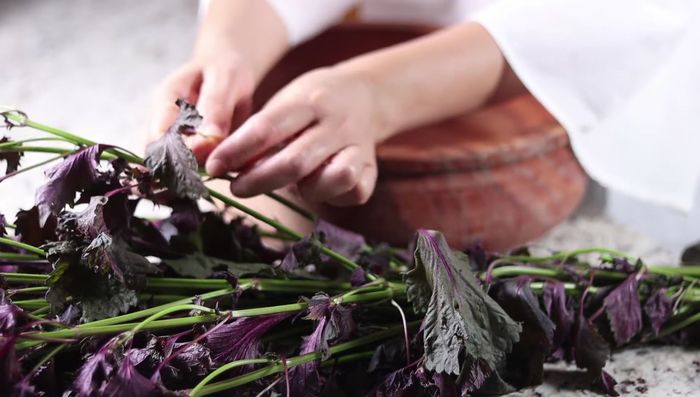Shibazuke, a vibrant and uniquely flavorful Japanese pickle, is a testament to the country's rich culinary heritage. This traditional preparation features a delightful combination of eggplant and cucumber, delicately pickled in a brine infused with shiso leaves, giving it a distinctive purple hue and a complex, subtly sweet and sour taste. Unlike many Western pickles, Shibazuke boasts a refreshing lightness, making it a perfect accompaniment to various dishes, from simple rice bowls to grilled meats. Its distinctive flavor profile stems from the careful balance of ingredients and the fermentation process.
Beyond its deliciousness, Shibazuke offers a rewarding culinary experience for both seasoned cooks and enthusiastic beginners. The ingredients are readily available, and the process, while requiring some patience, is surprisingly straightforward. Ready to embark on this exciting culinary journey and create your own batch of authentic Shibazuke? Let's delve into the step-by-step instructions that will guide you through this fascinating pickling process.
Tools Needed
- Gloves
- Container
- Kitchen paper
Ingredients
- Red Perilla Leaves (Shiso)
- Eggplant
- Cucumber
- Ginger
- Salt: 7% of total vegetable weight
Step-by-Step Instructions
Step 1. Prepare the Perilla Leaves
- Pick perilla leaves, ensuring to wear gloves to avoid staining your fingers.
- Wash perilla leaves thoroughly (at least twice) to remove dust and sand.
- Sprinkle salt (approx. 5% of perilla leaf weight) and knead the leaves to extract their dark purple juice; discard the juice.
- Repeat salting and kneading process, then squeeze out excess water as much as possible. Use kitchen paper to absorb remaining moisture.




Step 2. Prepare and Salt the Vegetables
- Prepare the eggplant, cucumber, and ginger; weigh them to determine the correct amount of salt (7% of total weight).
- Mix vegetables with the calculated amount of salt.


Step 3. Ferment the Shibazuke
- Transfer the mixture to a container, pressing to remove air bubbles. Press the vegetables with three times their weight for better fermentation.
- Leave the mixture at room temperature for two weeks of fermentation. The color will change from brown to purplish-red.


Step 4. Refrigerate and Serve
- After two weeks, transfer the fermented pickles to a clean container and refrigerate.

Read more: Kinpira Gobo Recipe: A Sweet & Savory Japanese Side Dish
Tips
- Don't worry about the white film that may appear on the surface during fermentation; this is a sign of healthy lactic acid bacteria activity.
Nutrition
- N/A
FAQs
1. How long does Shibazuke take to make?
The pickling process itself is relatively quick, but the fermentation and flavor development require at least 2-3 days, preferably longer for optimal taste.
2. Can I use different vegetables in Shibazuke?
While eggplant and cucumber are traditional, you can experiment with other vegetables like daikon radish or green peppers, but be mindful that their texture and flavor will alter the final result.
3. How long can I store homemade Shibazuke?
Properly stored in an airtight container in the refrigerator, your homemade Shibazuke will last for about 2-3 weeks. The flavor will continue to develop during this time.
Making Shibazuke is a rewarding experience, allowing you to enjoy the vibrant flavors of traditional Japanese cuisine in your own home. The unique taste and beautiful purple color will impress your friends and family. Now go forth and enjoy the delicious results of your homemade Shibazuke!
